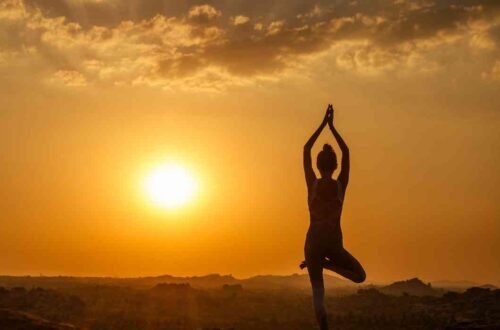
What are the Names of Popular Yoga Poses? Complete Beginner Guide
Yoga is like a beautiful dance that connects our body, mind, and breath. Each pose in yoga has a special name, and knowing these names helps us follow classes better and understand what our body is doing. In this post, we will walk you through the names of popular yoga poses, explain what they mean, and show how they are practiced.
Why Do Yoga Poses Have Names?
Yoga started in India a long time ago. In the Sanskrit language, which is very old, each yoga pose has a name that describes the position of the body. These names help everyone around the world talk about yoga in a common language. Even though many classes use English names now, the original Sanskrit names are still very important.
When you learn the names, it feels like you are becoming part of a big, worldwide yoga family. It also helps you remember poses better, because the names often tell a story or describe how the pose looks.
Basic Yoga Poses for Beginners
Let us start with some simple poses that almost every beginner learns. These are easy to practice and help build a strong base.
1. Mountain Pose (Tadasana)
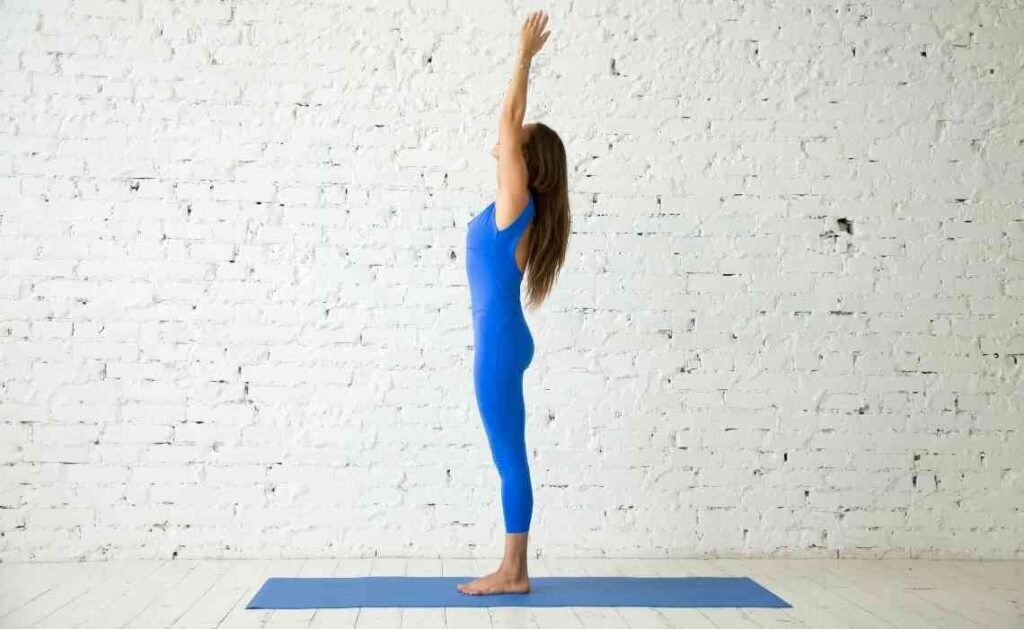
Mountain Pose is like standing tall and strong like a mountain. You stand with your feet together, arms at your sides, and your back straight. This pose teaches you about balance and good posture. Even though it looks simple, it builds strength in your legs and makes you feel grounded.
2. Downward-Facing Dog (Adho Mukha Svanasana)
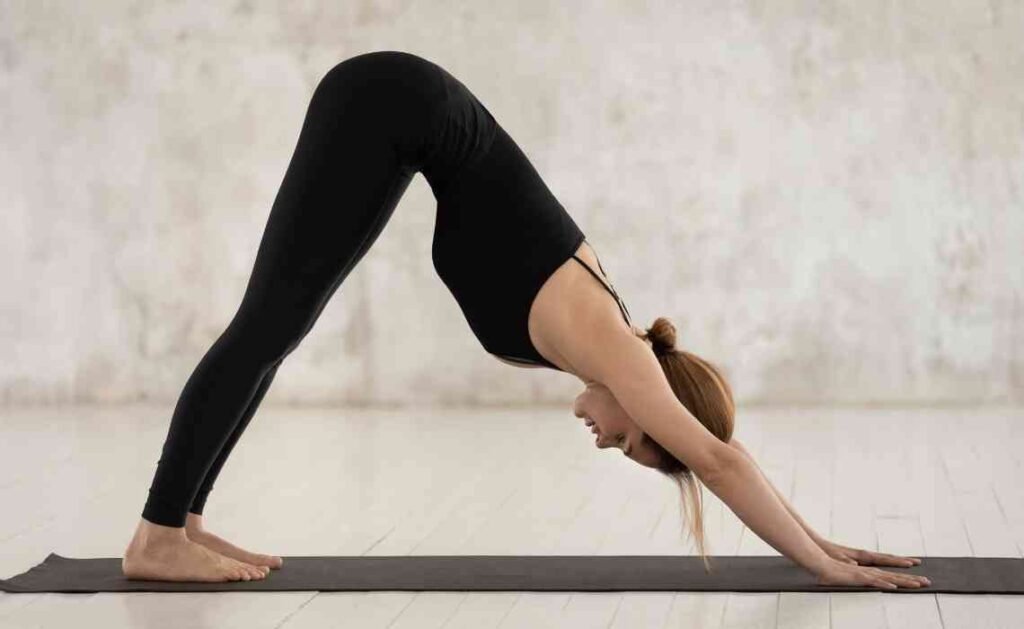
This is one of the most famous yoga poses. In this pose, your body forms an upside-down V shape. You place your hands and feet on the ground and lift your hips high into the air. It stretches your whole body and is great for making your arms and legs stronger.
3. Child’s Pose (Balasana)
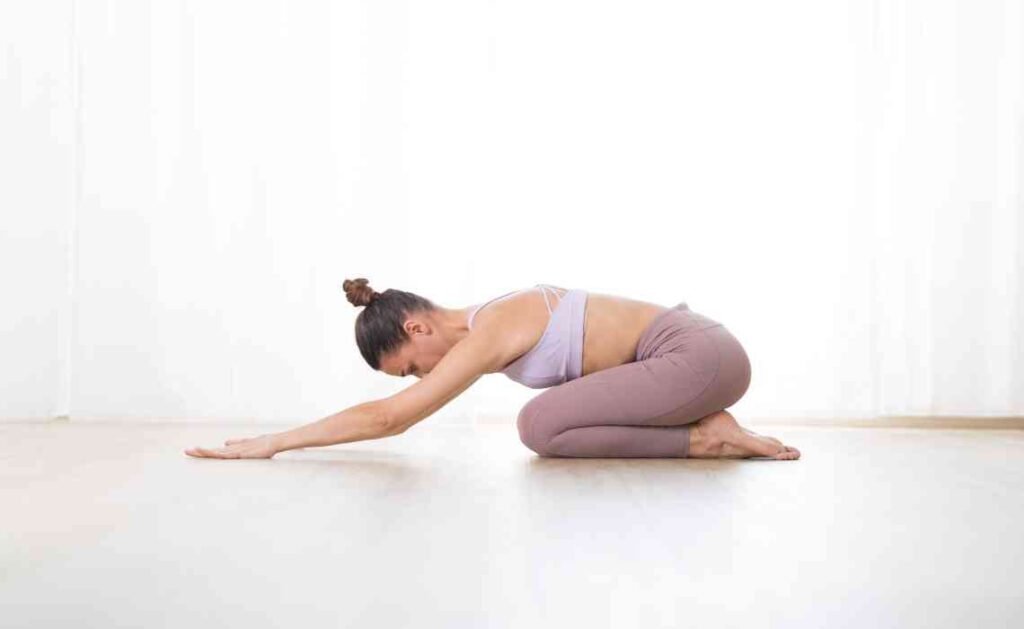
Child’s Pose is a resting pose that feels very comforting. You kneel down, sit back on your heels, and stretch your arms forward on the floor. It helps you relax and gives your back a gentle stretch.
4. Cat-Cow Pose (Marjaryasana-Bitilasana)
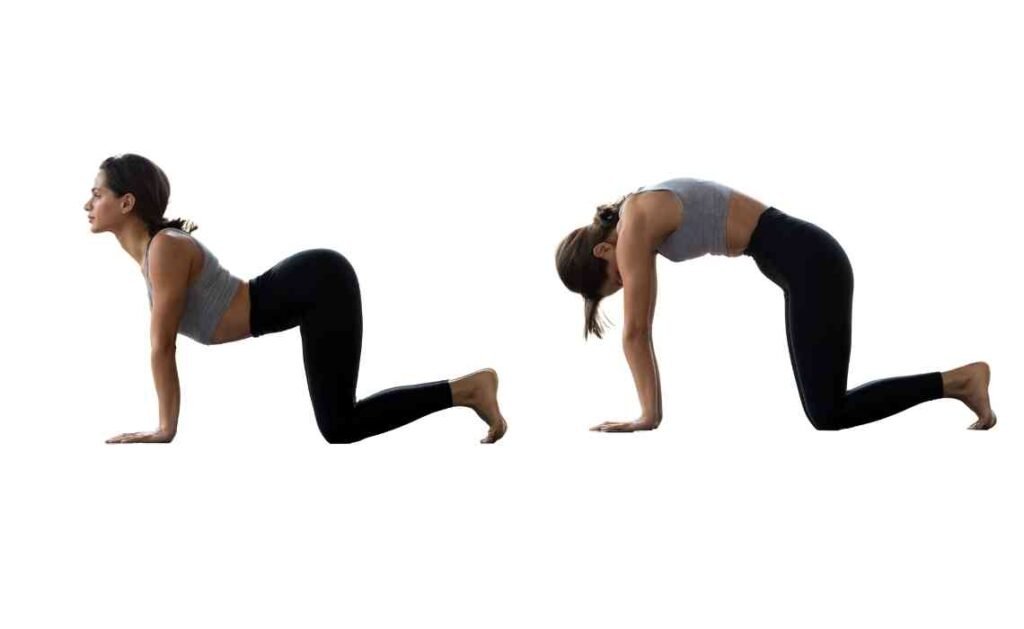
Cat-Cow is a pair of poses that you do one after the other. You get on your hands and knees. In Cat Pose, you round your back like a scared cat. In Cow Pose, you dip your belly down and lift your head and tailbone up. This movement makes your spine more flexible.
5. Cobra Pose (Bhujangasana)
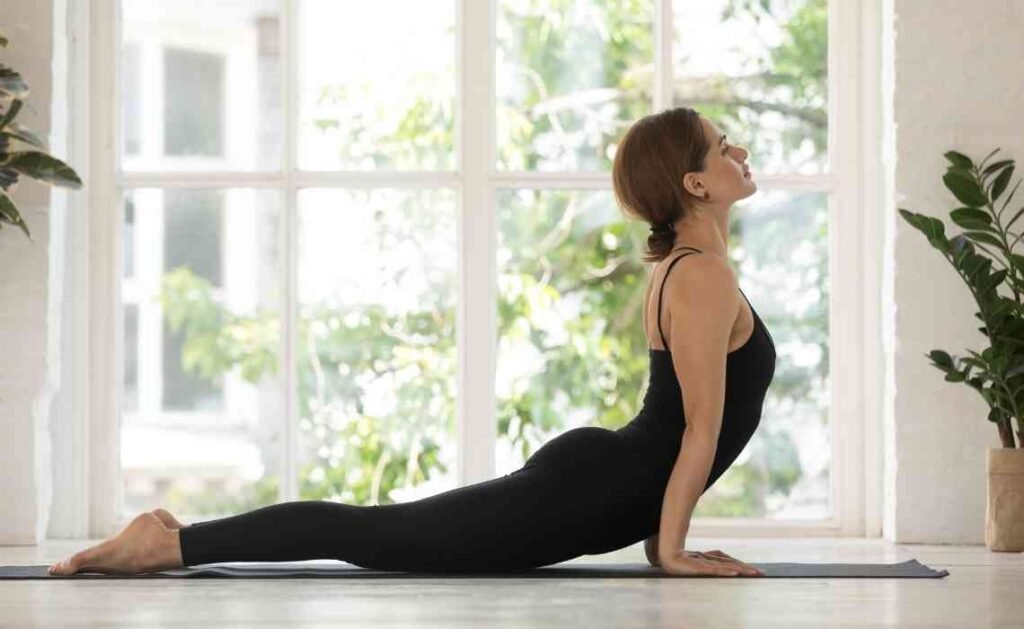
In Cobra Pose, you lie flat on your stomach, place your hands under your shoulders, and gently lift your chest up. You look like a snake lifting its head. This pose strengthens your back and opens up your chest.
Standing Yoga Poses
Standing poses help build strength, balance, and focus. These poses also boost your confidence.
1. Warrior I (Virabhadrasana I)
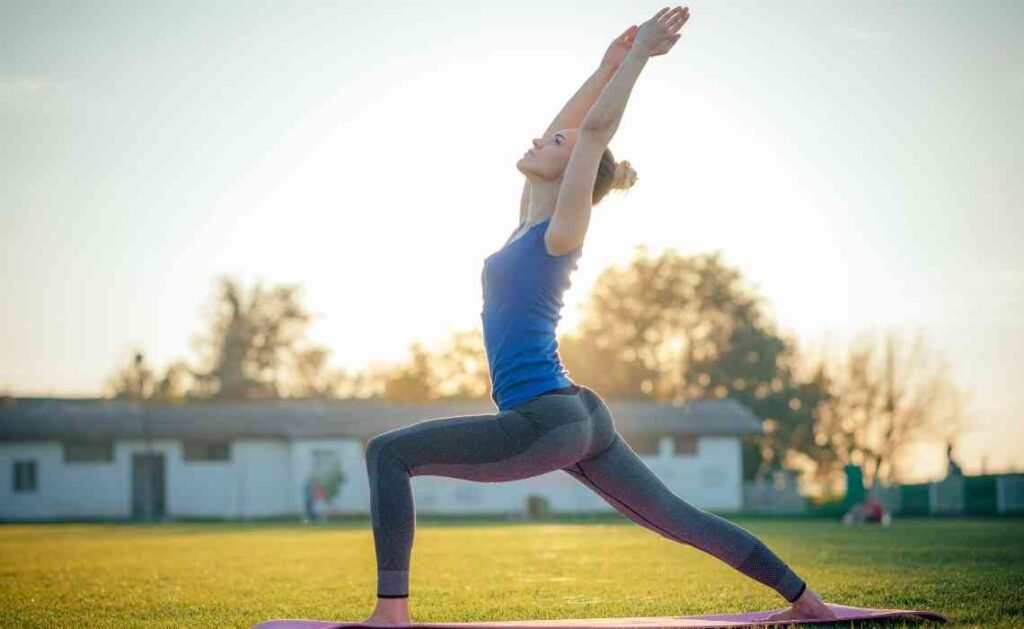
In Warrior I, you step one foot back and bend your front knee. You lift your arms high above your head. This pose makes you feel powerful and brave, just like a warrior.
2. Warrior II (Virabhadrasana II)
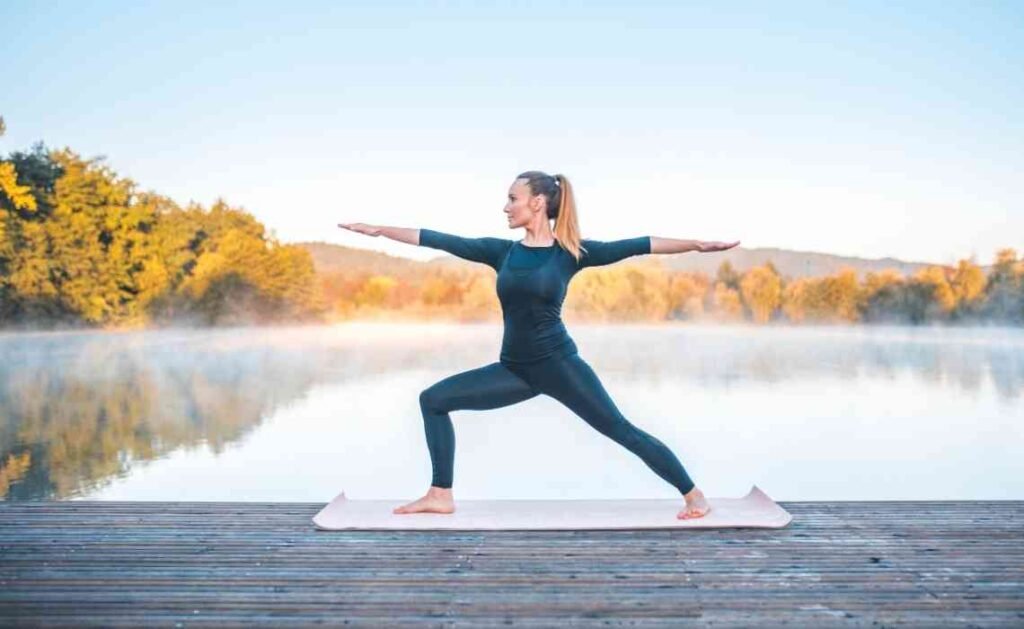
Warrior II is similar to Warrior I but your arms stretch out to the sides, and your hips open wider. It strengthens your legs and improves your focus. It also teaches you how to stay strong and steady.
3. Tree Pose (Vrikshasana)
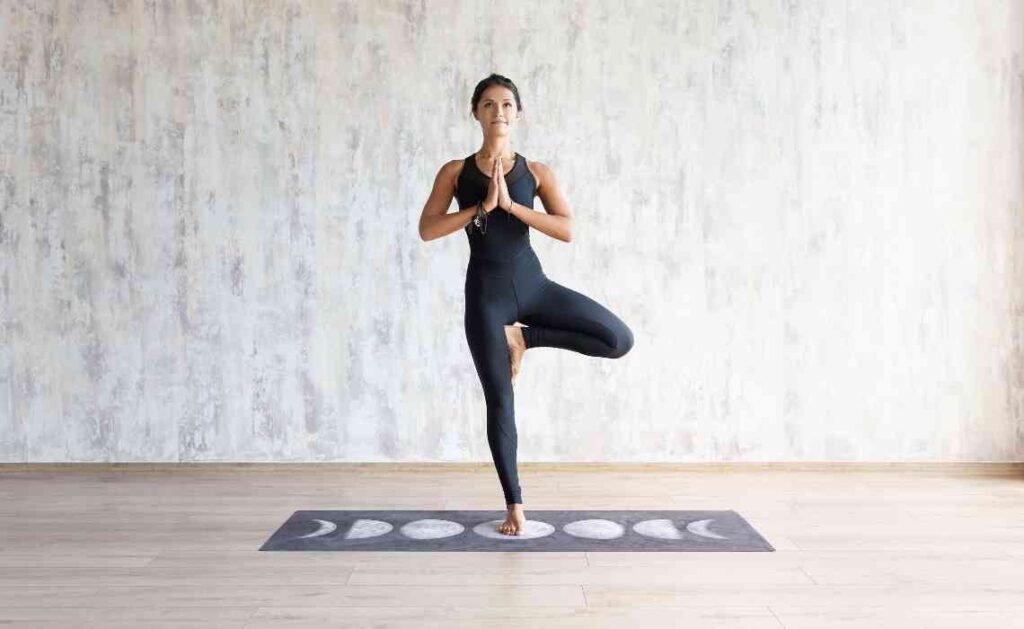
Tree Pose is a balancing pose. You stand on one leg and place the other foot on your inner thigh or calf. Your hands come together in prayer position or stretch above your head. It teaches balance and calmness, just like a tree standing firm in the wind.
4. Triangle Pose (Trikonasana)
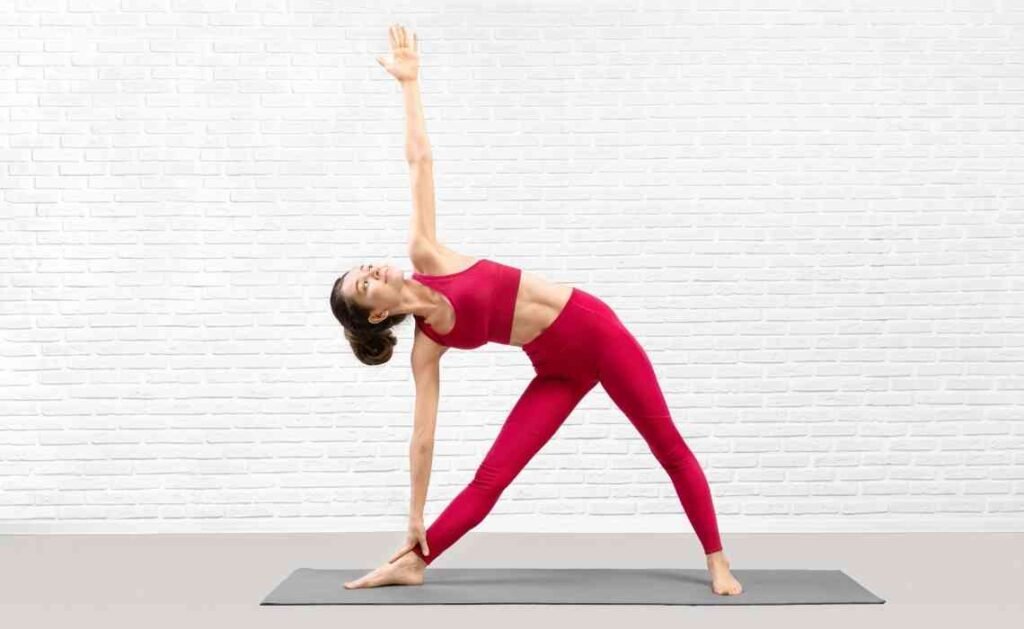
In Triangle Pose, you stand with your feet wide apart and stretch one arm toward the ground and the other toward the sky. Your body looks like a triangle. It stretches your sides and legs while strengthening your core.
Seated Yoga Poses
Sitting poses are good for stretching your hips, legs, and back. They also help you slow down and relax.
1. Easy Pose (Sukhasana)
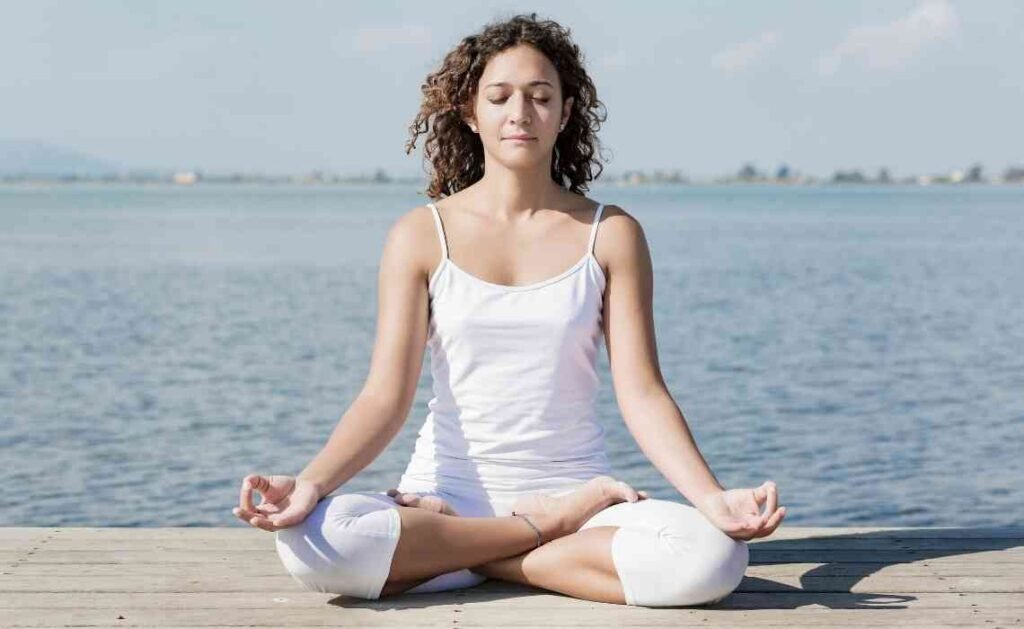
Easy Pose is simply sitting cross-legged with a straight back. It is often used for meditation. Even though it is called “easy,” it teaches you how to sit tall and breathe deeply.
2. Seated Forward Bend (Paschimottanasana)
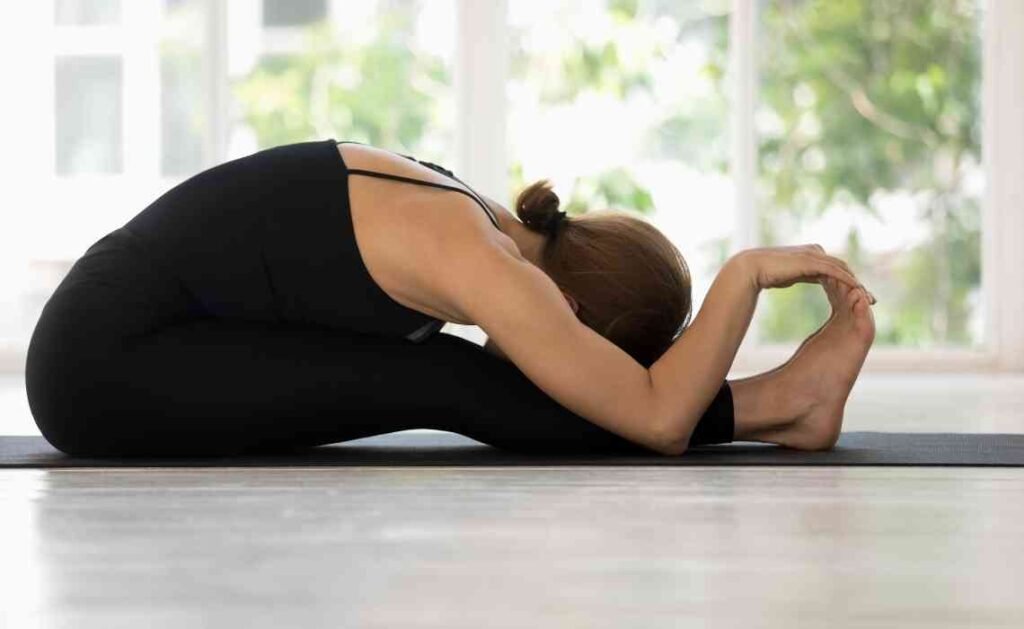
In this pose, you sit with your legs straight in front of you and reach for your toes. It gives a good stretch to your back and hamstrings. It also calms your mind.
3. Butterfly Pose (Baddha Konasana)
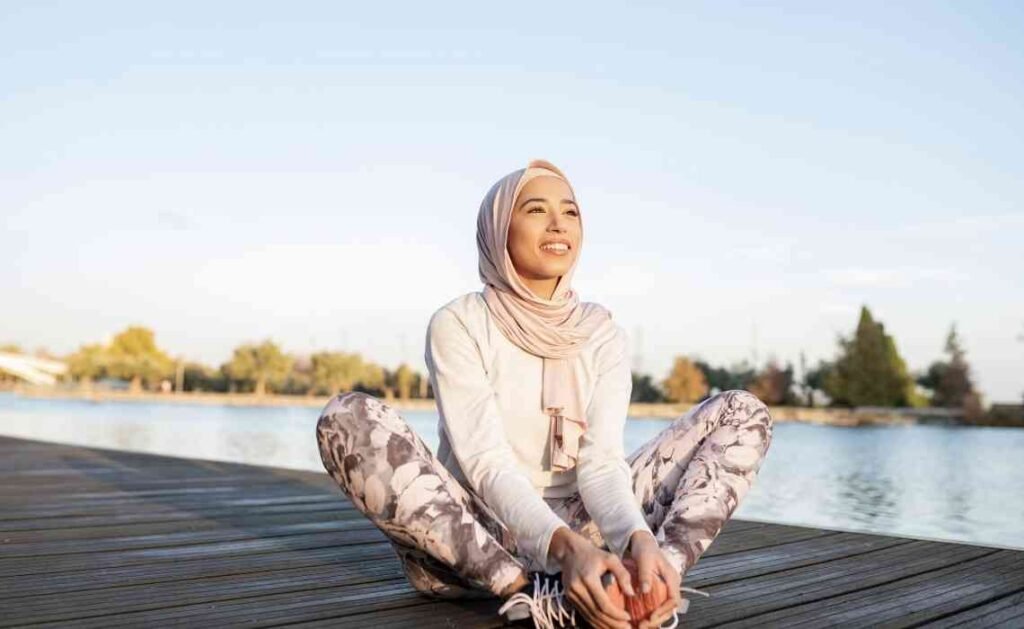
In Butterfly Pose, you sit with your feet together and let your knees fall to the sides. You flap your knees like a butterfly’s wings. This pose opens your hips and makes them more flexible.
Lying Down Yoga Poses
These poses are done while lying down and are very gentle.
1. Bridge Pose (Setu Bandhasana)
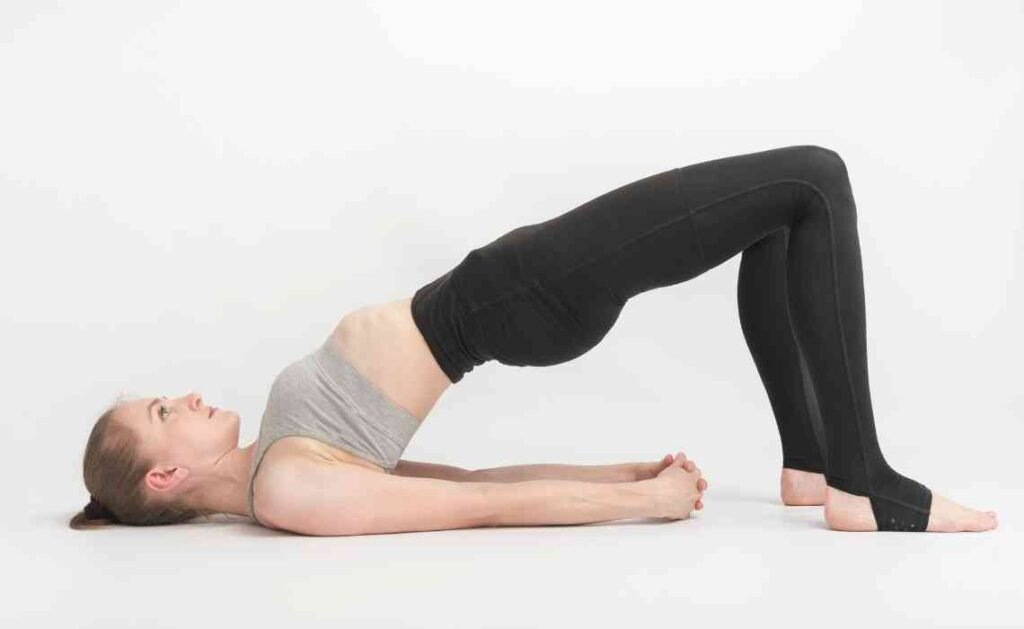
In Bridge Pose, you lie on your back, bend your knees, and lift your hips toward the sky. Your body looks like a small bridge. This pose strengthens your legs and lower back.
2. Corpse Pose (Savasana)
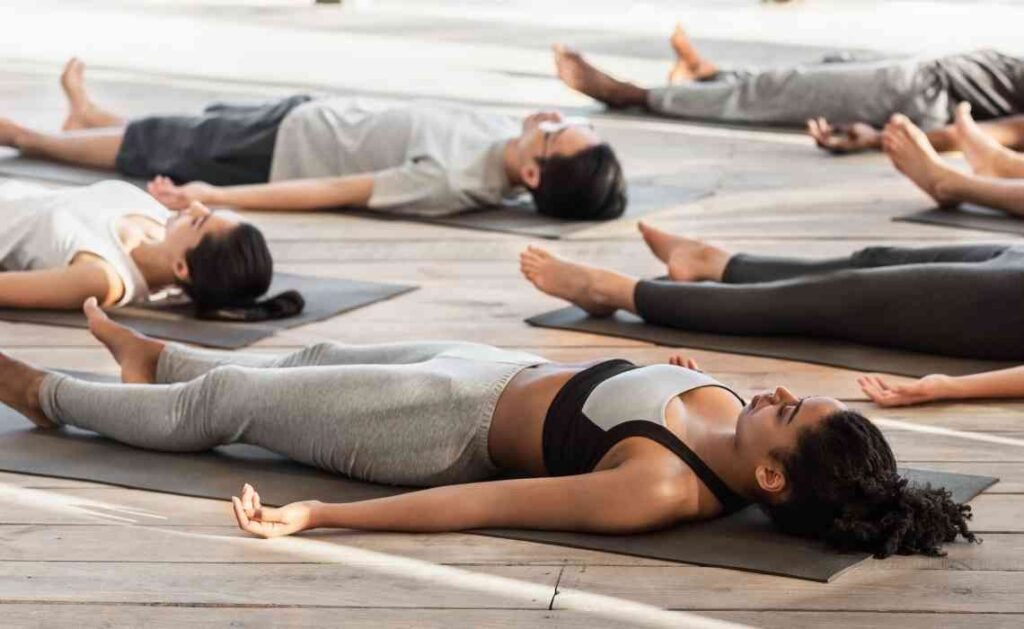
Corpse Pose is the final resting pose. You lie flat on your back with your arms and legs spread out. It looks simple but is very important because it helps your body and mind relax deeply.
Balancing Yoga Poses
Balancing poses are fun and help you focus better.
1. Eagle Pose (Garudasana)
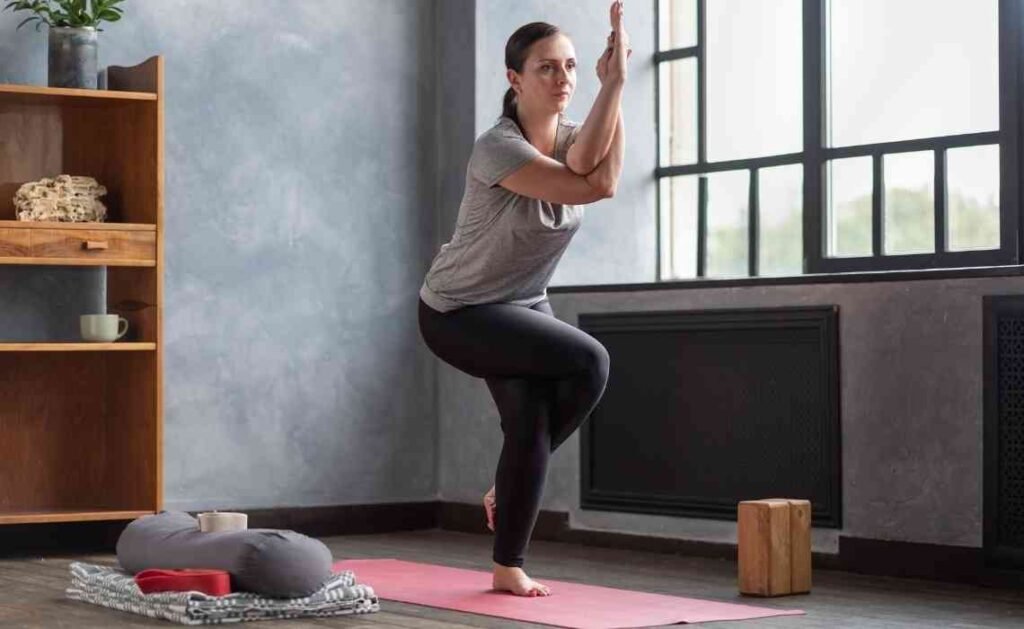
Eagle Pose involves twisting your arms and legs around each other. It looks tricky but it is fun to try. It improves your balance and strengthens your muscles.
2. Crow Pose (Bakasana)
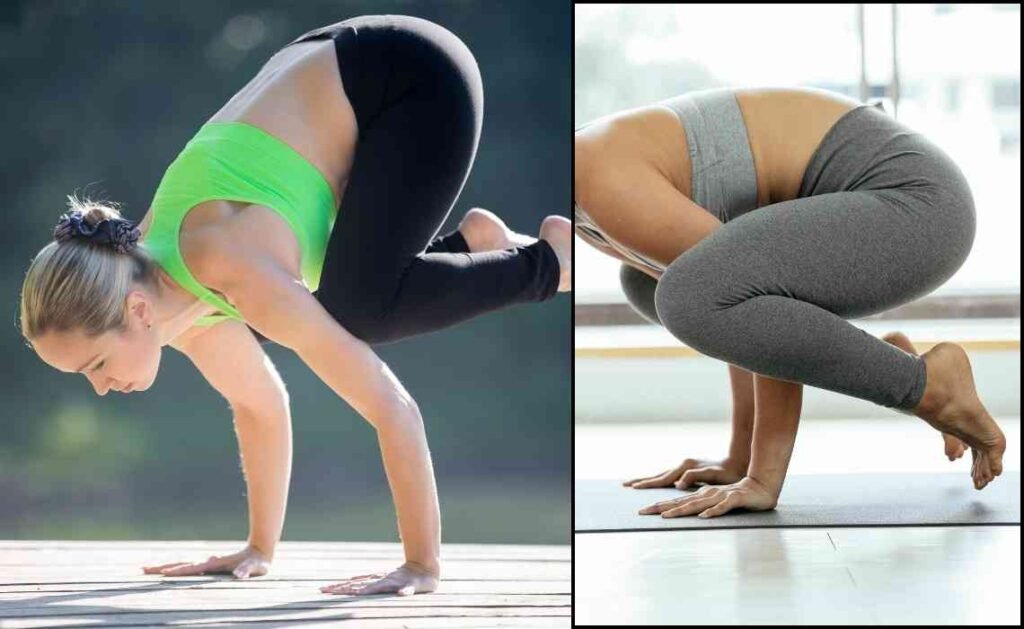
In Crow Pose, you squat down and place your hands on the ground. You lift your feet off the floor and balance on your hands. It sounds hard, but with practice, you can do it. It builds arm strength and teaches courage.
Yoga Poses That Build Strength
Yoga is not just about stretching. Some poses make you strong.
1. Plank Pose (Phalakasana)
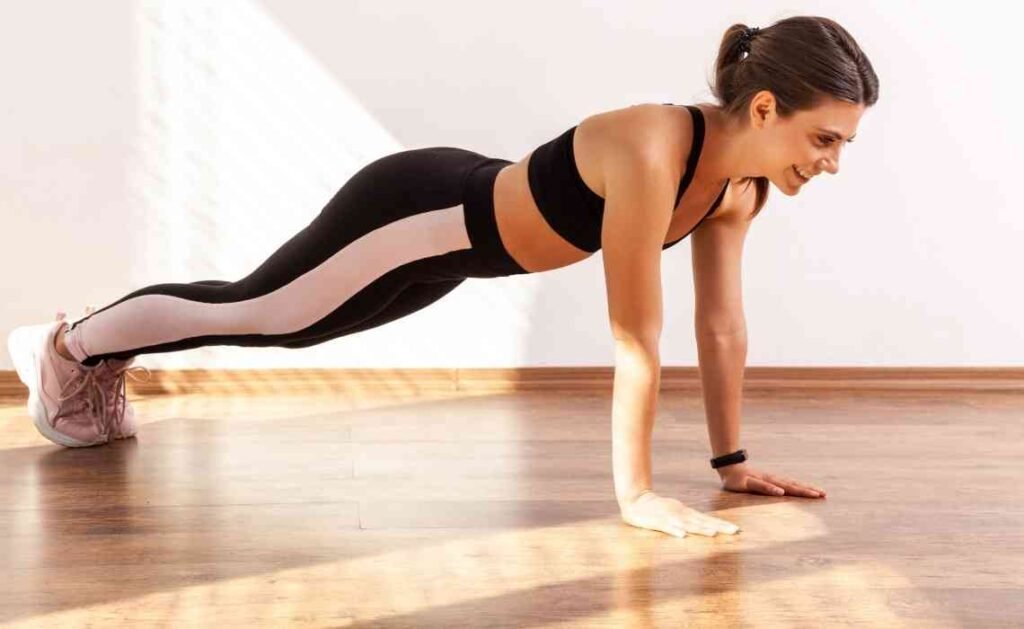
In Plank Pose, you hold your body straight like a board, supported by your hands and toes. It builds strong arms, shoulders, and core muscles. It also teaches endurance.
2. Boat Pose (Navasana)
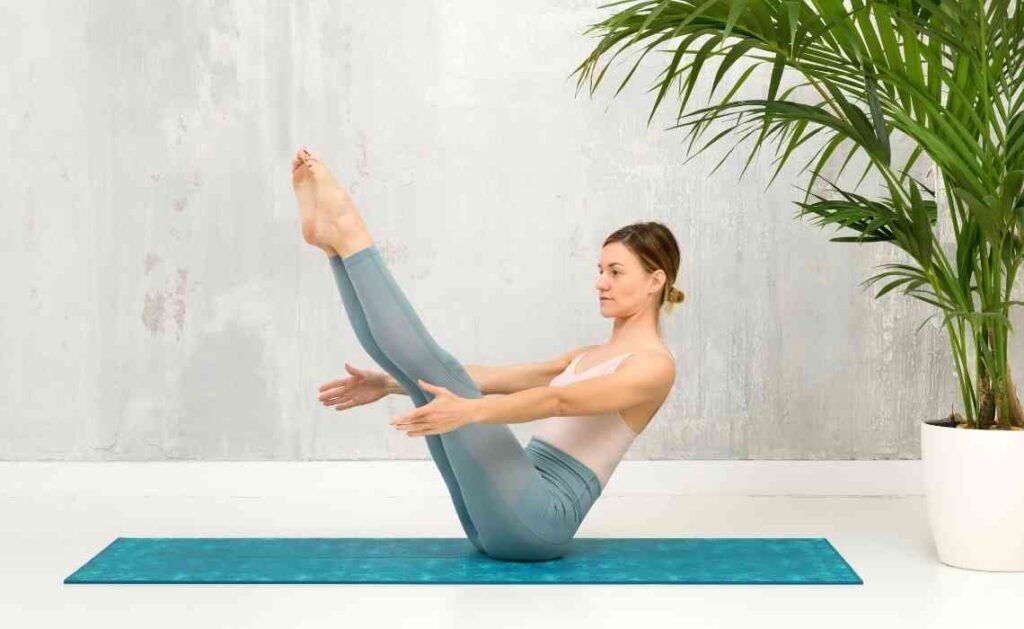
In Boat Pose, you sit and lift your legs off the floor, balancing on your bottom. Your body looks like a V shape. It makes your belly and back muscles very strong.
Twisting Yoga Poses
Twisting poses help clean and refresh your insides, kind of like wringing out a sponge.
1. Seated Spinal Twist (Ardha Matsyendrasana)
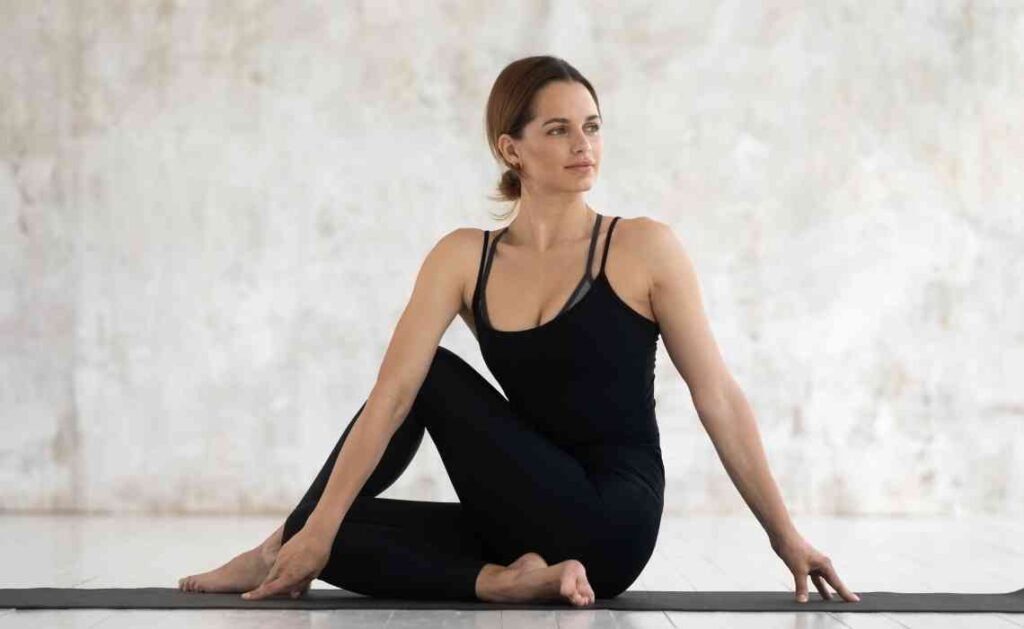
In this pose, you sit and twist your upper body to one side while one leg is bent over the other. It stretches your back and helps your digestion. It also feels very refreshing.
2. Revolved Triangle Pose (Parivrtta Trikonasana)
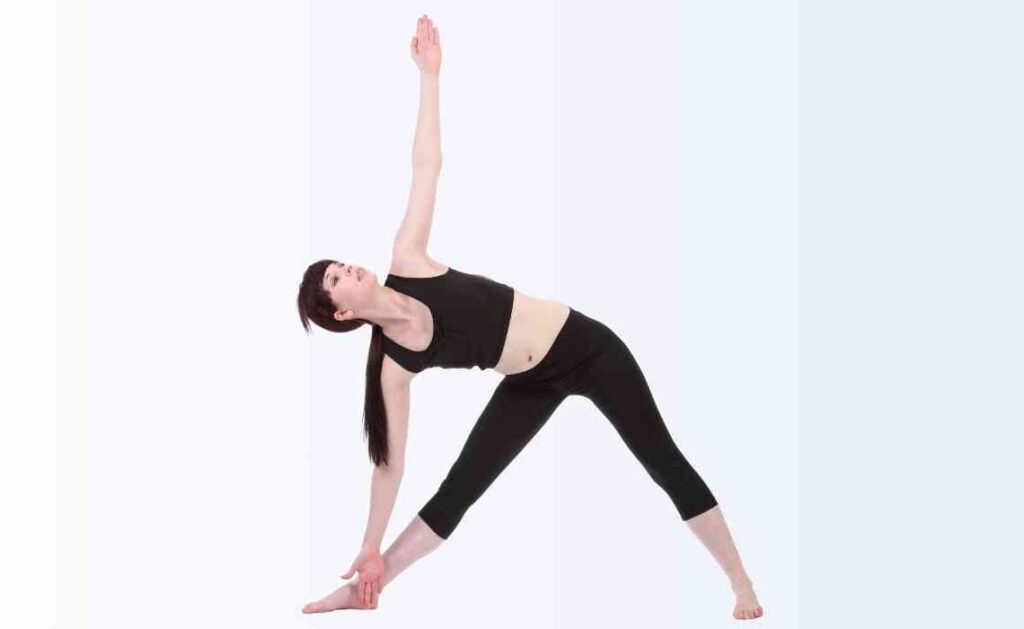
This is like the Triangle Pose but with a twist. You stretch and twist your body, making your back and legs strong. It improves balance and flexibility too.
Fun Yoga Poses for Kids
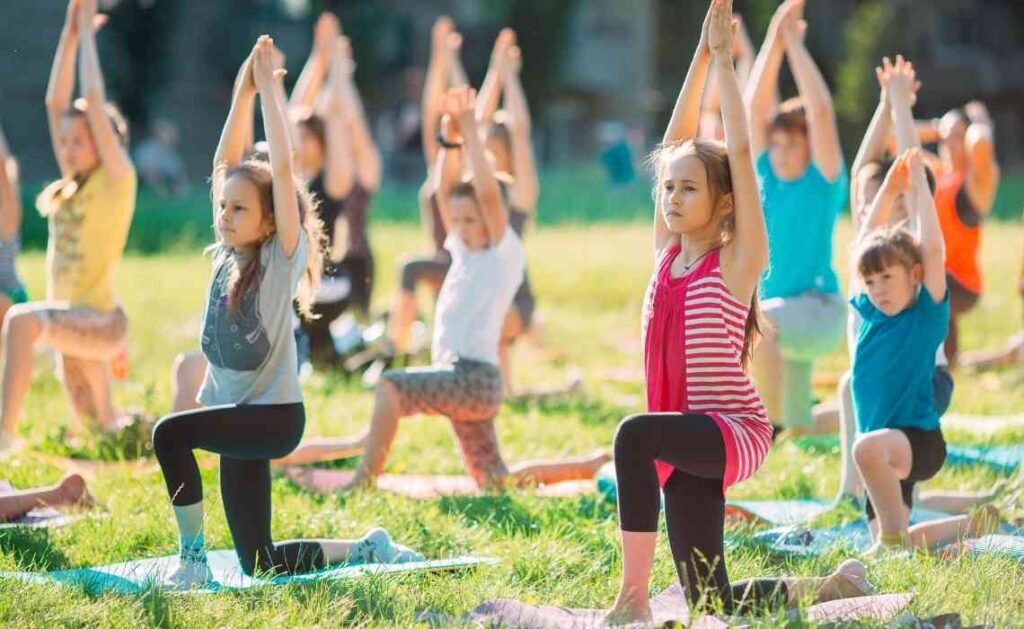
Some yoga poses are extra fun and great for kids or for playful adults.
1. Happy Baby Pose (Ananda Balasana)

You lie on your back, grab your feet, and pull your knees toward your chest. It looks like how happy babies play. It stretches your hips and makes your back feel good.
2. Lion’s Pose (Simhasana)

In Lion’s Pose, you sit, lean forward a little, open your mouth wide, stick out your tongue, and roar like a lion. It sounds funny but helps you release tension and feels very freeing.
Understanding Sanskrit Names
Each yoga pose has a Sanskrit name and an English name. Here are some simple tips to understand Sanskrit words better:
- Asana means “pose” or “seat.” Almost all yoga poses end with “asana.”
- Adho means “downward” and Mukha means “facing.”
- Vriksha means “tree” and Bala means “child.”
When you know these little bits, it becomes easier to understand new yoga poses you might hear about in a class.
Learning the names of popular yoga poses makes practicing yoga much easier and much more fun. It helps you move from one pose to another smoothly. You can also join yoga classes anywhere in the world and feel connected.
Remember, you do not need to memorize all the names at once. Start with a few, practice regularly, and soon they will feel like old friends. Yoga is not about being perfect. It is about showing up, trying, and feeling good inside and out.





